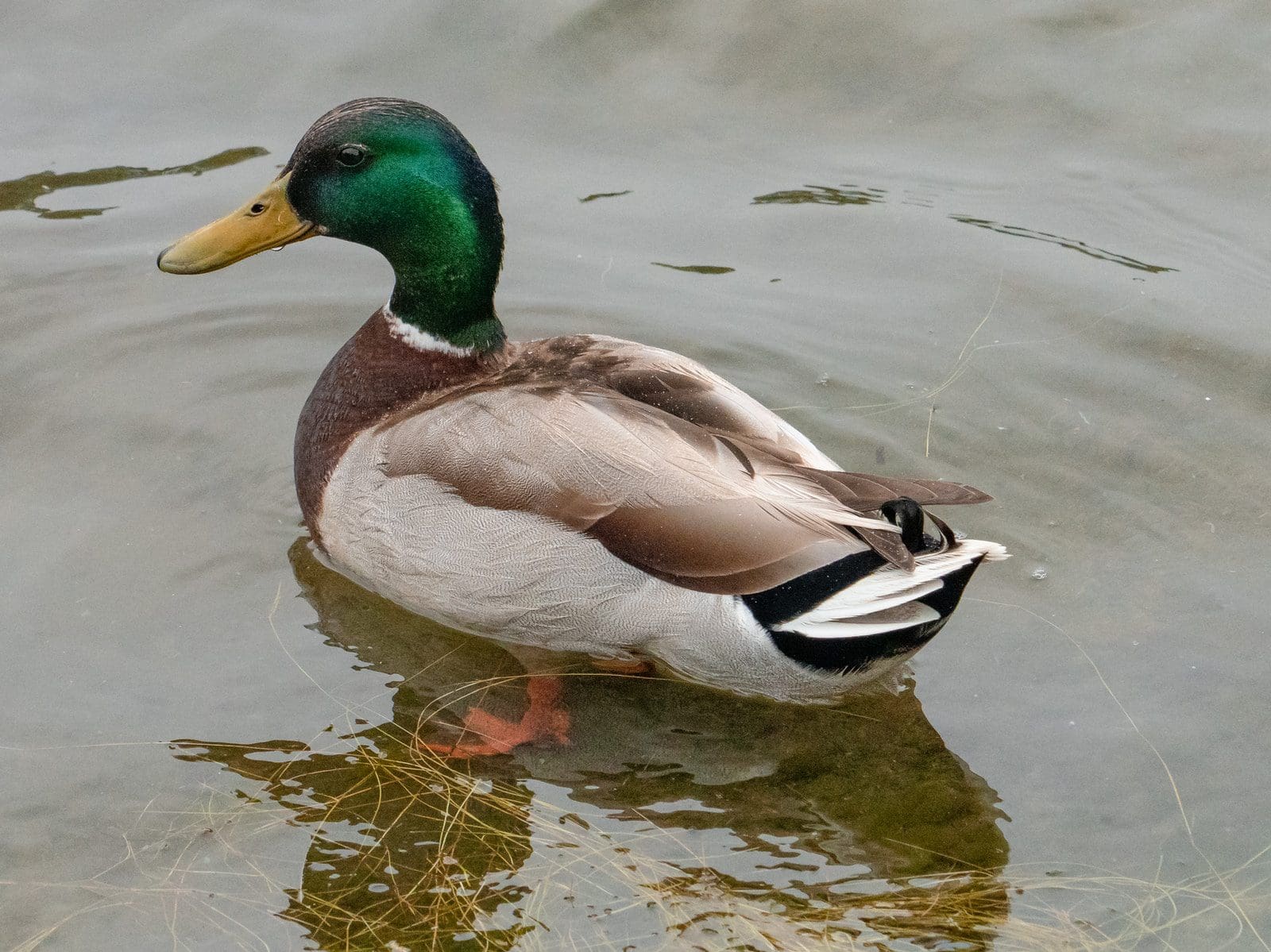If the real features are not known, especially about mallards, it would be a little difficult to identify a duck mallard. Since mallard is a genus of ducks, there are many similarities but few variations.
This article gives a special focus on some of the essential distinctions between them, following the general characteristics. To ensure the extension of understanding, it will also be useful to obey the details contained in this report.
Key Takeaways
- A mallard is a type of duck that is commonly found in North America and Eurasia, while a duck is a general term used to describe any bird that belongs to the family Anatidae.
- Mallards are known for their distinctive green head and yellow bill, while ducks can have a variety of colors and markings depending on their species.
- Mallards are larger than other species of ducks and are known for their distinctive quacking sound.
Mallard vs Duck
A mallard is a specific type of duck that is commonly found in North America and Eurasia, it is larger than most other ducks and is known for its colorful green head, yellow bill, and distinctive white neck ring. A duck is a more general term that refers to a wide variety of waterfowl species.

Mallard is possibly the most common duck kind in parks and ponds. In both North American and Eurasian wetlands, this is a sexually dimorphic duck breed. This suggests that men and women look different.
Male mallards are easily identifiable, sporting vivid green heads. The females are brown and have a subtle charm of their own.
Ducks are mostly marine animals, including gams that live in fresh and salt waters. About 120 different types of ducks are present. Ducks, except Antarctica, exist all over the globe.
Certain types of ducks are migratory. This applies particularly to the Northern Hemisphere ducks. Tropical ducks do not migrate seasonally.
Comparison Table
| Parameters of Comparison | A Mallard | Duck |
|---|---|---|
| Species | One specie. | More than 120 species. |
| Breed | Wild breed | Home-grown. |
| Color | Light bottle-green head | White bottle neck. |
| Feeding habits | Mallard is an animal with gregarious feeding habits | Ducks in general have several feeder varieties |
| Sound | Mallard have damped voice | Ducks have many vocalizations |
What is a Mallard?
Mallard is also known as a common-language wild duck and the scientific name of Anas platyrhynchos. They have native populations in North America, Europe, and Asia in temperate and subtropical climates.
In Australia and New Zealand, mallards are added. The male mallards are shiny, green in color, with a white ring around their throat.
The mallards have brown colors, with some tracks that do not catch humans’ attention. However, because of the inclusion of the most common female reproductive organ, they are naturally very attractive to males.
During the season of mating, the men are much louder than explained above, with a bright green head, black back, some bright blue on the wings, and a dark-colored yellowish-orange beak.
These wild ducks live in wetlands and feed on the plants and animals that lie in their aquatic habitats. Typically gregarious feeders are mallards. These birds, however, have an average length of around 50-65 cm and body weights ranging from 700 g to 1.6 kg.
The ancestor of household ducks was wild ducks or mallard.
Mallards are monogamous, speaking. Long before the breeding season in spring, they will form couples. Courtship can be seen in the winter, while pairing takes place in the fall. Just the women incubate the eggs and look after the ducks.
Both men and women are in their wings with a blue patch. Mallards produce the familiar “quack” tone, the sound of a duck associated with most people. Female mallards are vocal.

What is a Duck?
Ducks are the family’s most diverse: Anatidae, with more than 120 members in various genera. The male ducks are called drakes, while the females are commonly known as ducks.
Ducks are the smallest of all the taxonomic Anatidae Family members in terms of their body size. The household races are larger than the wild. Among the members of the family, the neck of ducks is the shortest: Anatidae.
They have several enticing color variations. Ducks are all-omnivorous feeders; others are filters whose bills are filtered with pectin (comb-like processes). Filter feeders live on the water surface while ducks will drill underwater—diving ducks.
Ducks are monogamous, but only one or more seasons last for the couple. That means for a short time, and they are monogamous and not for a whole life.
You breed in the nest, constructed by the women alone without the assistance of the drakes. Temperate and northern hemispheric ecosystems migrate without tropical populations.
Due to the abundance of food, especially during the winter, in the Tropics is higher than in temperate regions. Some nomadic species exist, especially in the Australian deserts, where the precipitation is minimal.
Ducks are monogamous. They only go together for one year, but certain bigger species are bonding for more years. Sexual dimorphism is seen in many species of ducks. This suggests that men and women look different.
However, if their environment is affected by droughts or related seasonal changes, they will transition to a more nomadic lifestyle. Most ducks remain in the same living place.

Main Differences Between a Mallard and a Duck
- Mallard is one species, whereas ducks have more than 120 species.
- Mallard is a wild breed, whereas ducks are also homegrown.
- Mallard is an animal with gregarious feeding habits and is actively forged, whereas ducks have several feeder varieties, including filter feeders and others.
- Mallard is specially colored, with a light bottle-green head and body, whereas ducks are unique in color.
- The sizes and colors of the ducks vary, whereas mallards’ sizes and colors are specific.
- Ducks have many vocalizations, ranging from low to high-pitched quacks, whereas Mallard has a damped voice and low-pitched quacks.
- Ducks are the smallest of all the taxonomic Acaridae family, whereas mallards are ancestors of the Acaridae family.

- http://search.ebscohost.com/login.aspx?direct=true&profile=ehost&scope=site&authtype=crawler&jrnl=13922130&asa=Y&AN=16792308&h=7c0JvpDxvY%2BTPJToQSNteLzjPEa2iDROzVFCHY%2F%2B5AYKv6drJFLKPy%2BzSUqIrSbhCnPLmWRPq3cPExwlFs3XZw%3D%3D&crl=c
- https://www.sciencedirect.com/science/article/pii/0269749187900121

The scientific details provided here are simply impeccable. I’ve learned a lot from this!
Yes, it’s an exceptional resource for understanding these waterfowl species
Totally agree, this is high-caliber educational content
This piece is not only educational but also quite engaging. A job well done!
A truly remarkable work of educational literature
Absolutely, it’s a fantastic read
The comparisons and detailed descriptions have made this one of the most informative articles I’ve read on mallards and ducks. Kudos to the writer!
I couldn’t agree more, it’s a truly enlightening piece of work
Absolutely, the level of detail provided here is exemplary
This is such an interesting read, I had no idea there were so many differences between mallards and ducks. Kudos to the author for breaking it down so clearly.
Definitely, it’s a great piece of content
This information is invaluable, it really helps in understanding the intricacies of these waterfowl species
I found the details provided about mallards and ducks very insightful. It’s clear and well-organized, makes it easy to comprehend.
Yes, a very commendable effort in making this information accessible to all
The author has done a brilliant job at delivering complex information in a simple manner
This article has given me a newfound appreciation for mallards and ducks. The thorough analysis is commendable.
Agreed, the depth of insight provided here is unmatched
Great article! It’s fascinating to learn about the differences between mallards and ducks.
I agree, it’s very informative
I appreciate the effort put into this article, the level of detail is very impressive.
Absolutely, a commendable piece of work
This has been an eye-opening read, great job by the author
The article provides an excellent overview of mallards and ducks. The comparisons are really helpful in understanding these birds.
I couldn’t agree more, this has widened my knowledge on waterfowl
Absolutely, it’s a great educational resource
I really enjoyed reading this, it’s both entertaining and informative.
Absolutely, it’s a great blend of education and engagement